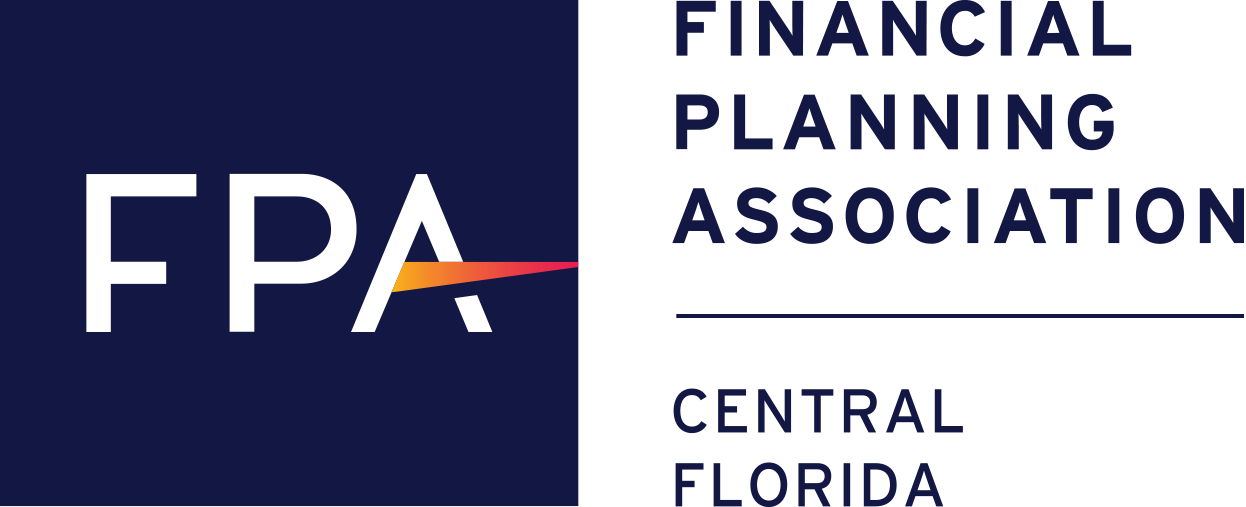
Spotting – and Addressing – Five Potentially Damaging Financial Blind Spots
 As many mirrors and cameras as automobile manufacturers put on vehicles these days to help prevent accidents, drivers still must contend with blind spots. They can’t see everywhere around them, all the time.
As many mirrors and cameras as automobile manufacturers put on vehicles these days to help prevent accidents, drivers still must contend with blind spots. They can’t see everywhere around them, all the time.
The same applies to our financial lives. As well-intentioned, diligent and aware as people try to be in handling their finances and planning for the road ahead, they may have blind spots — gaps, obstacles and other unforeseen risks on the road of life that, if not recognized and adequately addressed, could cause lasting financial damage.
The good news is, many of the most common financial blind spots not only can be identified but addressed. Here are five such blind spots that financial professionals tend to encounter frequently in working with their clients, with suggestions for how to counter them before they cause irreparable damage.
Blindspot 1: Not seeing saving for later as imperative. America faces a serious retirement savings shortfall. One in three American adults have zero retirement savings, while 23 percent report having less than $10,000 saved for retirement, according to a 2016 study by GoBankingRates. What’s more, 42 percent of Baby Boomers, the generation closest to retirement, have nothing saved for retirement, according to a separate 2018 study by the Insured Retirement Institute.
The savings shortfall applies across generations and across demographic groups. Even wealthier high-earners have a blind spot about saving enough, according to Monica L. Dwyer, a CERTIFIED FINANCIAL PLANNER™ (CFP®) professional with Harvest Financial Advisors in West Chester, Ohio. “The lesson here is, live within your means,” she says.
Steps to address a savings blindspot:
- If not currently setting aside money in a retirement plan, enroll in a workplace plan [such as a 401(k)] or open an IRA (individual retirement account) and immediately begin contributing to it.
- Take advantage of matching retirement plan contributions if your employer offers them.
- If enrolled in a retirement plan, increase monthly contributions and automate contributions if possible so they occur without choice or prompting.
- If age 50 or older, take advantage of federal catch-up provisions that allow higher annual tax-favored contributions to retirement plans.
- Spend less in discretionary areas and apply the difference toward retirement.
- Pay yourself first, prioritizing saving for retirement over other less pressing goals.
Blindspot 2: Not recognizing our own vulnerability and mortality. When it comes to matters of mortality and susceptibility to health issues, people tend to bury their heads in the sand. But not only is death inevitable, health issues that require potentially bank account-draining care are more commonplace than many people know. Indeed, according to the U.S. government, seven in 10 people will require some form of long-term care during their lifetime. What’s more, people generally loathe to discuss their own death and the possibility their health may fail. But given the financial ramifications, discuss and plan for them they must, says Dwyer. ”Talking about it and planning for it is one of the most loving things that you can do for the people in your life who will likely find it difficult to function after you take your last breath.”
Steps to address a mortality/health vulnerability blindspot:
- Put in place, and keep updated, all relevant estate documents, including a will, medical directives, powers of attorney, beneficiary designations on insurance policies, retirement plans, annuities, financial accounts, and more.
- Hold honest, non-threatening discussions — in advance — between parents, kids and other relevant parties to talk about expectations, roles and financial responsibilities should a spouse or parent pass away, encounter a serious health issue or be otherwise disabled.
- Engage an objective third party with relevant experience, such as a CFP® professional and/or an elder care specialist, to help couples and families sort through issues and options related to aging, elder care and wealth transfer.
Blindspot 3: Overlooking insurance and the cost-effective asset protection it provides. An insurance policy serves as a hedge against the risk of financial losses that may result from damage to the insured person and their property, or from liability for damage or injury caused to a third party. When it comes to protecting assets, among the most valuable types of insurance are life insurance and disability insurance. Disability insurance (which comes in long- and short-term varieties) is useful for working people to have because it replaces a portion or all of their income should a disability prevent them from working and earning a living.
Life insurance is a highly versatile way to protect a couple and a family financially in the event a spouse or parent dies. If you want to be sure surviving family members will be in good shape financially if you die, if you want a family business to continue after you’re gone or want to leave a legacy to heirs or to a favorite charitable cause, life insurance can help accomplish those goals. Life insurance afford people access to leveraged dollars, whereby the death benefit typically is many times what the policyholder pays in premiums on the policy. For example, a policy with a death benefit of $500,000 might require a premium payment of less than $1,000 a year. In many cases, the benefit amount paid to beneficiaries far surpasses the amount paid into the policy — the premiums. That math makes a compelling argument for life insurance. So does the fact that the death benefit amount typically passes tax-free to beneficiaries.
Besides life insurance and disability insurance, health insurance is another necessity to protect assets from a potentially financially draining health issue. And depending on circumstances and needs, other forms of insurance could also be worthwhile, including a personal umbrella policy, long-term care insurance, critical illness insurance, identity theft insurance, and more.
Steps to address an insurance blindspot:
- If you have loved ones who depend on you for financial stability, invest in life insurance and disability insurance.
- Investigate the insurance options available through your employer. Some can be highly cost-effective and worthwhile.
- Consult an insurance specialist to determine how much coverage you need for life, disability, etc., whether the current coverage you have is adequate, and whether you might benefit from other types of coverage.
Blindspot 4: Not paying enough attention to investment diversification/asset allocation. Investing and building assets for later in life in and of itself is not a guarantee of financial security. To maximize their value now and for the long-term, your assets need to be appropriately allocated. The primary goal with investment strategy and asset allocation is to strike an appropriate balance between growth potential and downside protection, between risk and reward. Common blindspots in the investing realm include too many assets in a specific type of account, an asset base that is allocated either too aggressively toward growth or too conservatively toward protection, an asset base that lacks an appropriate cash reserve, and assets that aren’t adequately protected from inflation.
Steps to address an investment blindspot:
- Consult with a financial/investing professional to determine an appropriate asset allocation/mix for you, then rebalance/reposition those assets accordingly.
- Stay invested in the stock market to some extent, whether it’s via investments in individual company shares, mutual funds, ETFs, etc. The stock market not only has been an excellent source of asset growth over time (although past performance is no guarantee of future results), it also is a good hedge against inflation, since the stock market tends to track inflation.
- Diversify holdings inside and outside retirement plans, allocating assets across different classes, including equities, fixed investments such as bonds and bond funds, liquid cash, and perhaps other assets classes, such as real estate, commodities and other so-called “alternative investments.” This should help mitigate the impact of volatility.
- Diversify accounts in terms of their tax treatment. For maximum tax efficiency, spread investments across accounts with varying tax treatment, including tax-deferred accounts, such as a traditional IRA or 401(k), tax-free accounts, such as a Roth IRA, and taxable accounts, such as brokerage accounts with stocks, bonds, etc.
- Build and maintain an emergency fund — a cash reserve kept readily accessible in a bank account, CD or money market to draw from in case of a lost job, an unexpected major expense, etc. The general rule of thumb is to keep three to six months’ worth of household expenses in reserve. That amount could be significantly larger for pre-retirees and retirees, however. If they’re relying on the sale of certain assets such as stock market holdings to generate retirement income, they can instead draw income from the cash reserve when the value of their stock investments is down, rather than having to sell shares of stock when their value has dropped. With an adequate cash reserve, a person can draw income in cash until (hopefully) their stock market investments recover their value.
Blindspot 5: Overlooking the importance of cash-flow management. The foundation for a solid financial present and future is spending within your means — essentially keeping cash inflows and outflows balanced, so you’re able to cover all your necessary expenses, with room to meet other priorities, such as saving for a child’s college education or toward your own retirement, plus extra for discretionary spending. This happens not by chance but by tracking income and expenses and establishing a household spending plan.
Steps to address a cash-flow management blindspot:
- Track monthly income and expenses over a period of time and based on that, develop an itemized budget/spending plan.
- Commit to following that plan, giving yourself incentives for doing so.
- Set priorities for your money, whether it’s paying down a large credit card balance, saving for a house or a big vacation, or building assets for retirement.
- Identify areas where you can divert discretionary spending and put it toward meeting those priorities.
September 2018 — This column is provided by the Financial Planning Association® (FPA®) of ___________, the principal professional organization for Certified Financial PlannerTM (CFP®) professionals. FPA seeks to elevate a profession that transforms lives through the power of financial planning. Through a collaborative effort to provide more than 23,000 members with tools and resources for professional education, business support, advocacy and community, FPA is the indispensable resource for CFP® professionals. Please credit FPA of ___________ if you use this column in whole or in part.
The Financial Planning Association is the owner of trademark, service mark and collective membership mark rights in: FPA, FPA/Logo and FINANCIAL PLANNING ASSOCIATION. The marks may not be used without written permission from the Financial Planning Association.
